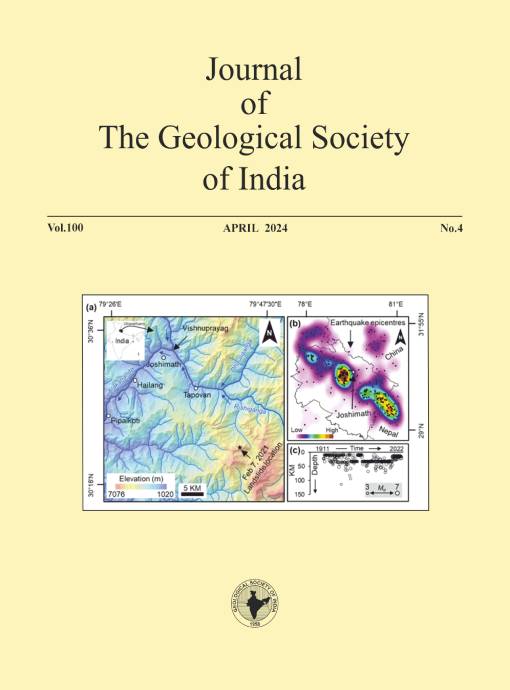Land Subsidence Phenomena in Joshimath Town, Garhwal Himalaya, India: Field Observations and Possible Causes
DOI:
https://doi.org/10.17491/jgsi/2024/173863Keywords:
Land subsidence; Joshimath; Garhwal Himalaya; VulnerabilityAbstract
The town of Joshimath, in the state of Uttarakhand, India, has been witnessing severe ground subsidence problems. Though the land subsidence has been documented since a long time, there were sudden enhanced appearance of cracks on the ground and in houses overnight on 2nd and 3rd of January 2023, in the western segment of the Joshimath town. At the same time, there was high-volume of sediment-laden water discharge inside the Jaypee Colony beginning from 3rd of January 2023. More than 1000 houses and infrastructure were severely damaged during this event. Therefore, it is being of high importance to study the present situation and highlight the possible reasons that make this area vulnerable to land subsidence. With this aim, the present study incorporates different data sources and field observations to provide an overview of the present situation of the Joshimath town.
Downloads
Metrics
Issue
Section
Downloads
Published
How to Cite
References
Bhattacharya, A. and Jugran, D.K. (1982) Landslide due to mass sinking phenomenon: Sunil-Joshimath of UP Himalaya example. Jour. Indian Soc. Photo-Interpret. Rem. Sens., v.10(1), pp 53-55.
Bilham, R. (2015) Raising kathmandu. Nature Geoscience, v.8(8), pp.582-584. https://doi.org/10.1038/ngeo2498
Bisht, M.P.S. and Rautela, P. (2010) Disaster looms large over Joshimath. Curr. Sci., v.98(10), pp.1271.
https://earthexplorer.usgs.gov/, accessed on Jan 19, 2023
https://en.climate-data.org/, accessed on January 21, 2023.
https://timesofindia.indiatimes.com/city/dehradun/10-crore-people-visit-uttarakhand-a-year-how-much-can-it-take-say-experts/articleshow/96823611.cms; accessed on March 9, 2023.
https://www.censusindia.co.in/, accessed on January 21, 2023.
https://www.tribuneindia.com/news/nation/number-of-buildings-with-cracks-now-849-471094; accessed on January 23, 2023
Sundriyal, Y., Kumar, V., Chauhan, N., Kaushik, S., Ranjan, R., Punia, M.K. (2023) Brief communication on the NW Himalayan towns; slipping towards potential disaster. Natural Hazards, Earth Syst. Sci. Discussions, pp 1-9. https://doi.org/10.5194/nhess-2022-296
Valdiya, K.S. (1988) Tectonics and evolution of the central sector of the Himalaya. Phil. Trans. Royal Soc. London. Series A, Mathematical and Physical Sciences, v.326(1589), pp 151-175.

 Shantanu Sarkar
Shantanu Sarkar






